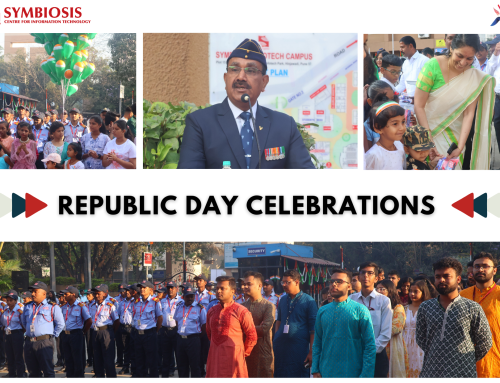Applications of AI Research

The speaker Joy Mustafi was efficacious in delivering his guest lecture to the students on 5th September whereby engaging them in the concepts of AI for research purposes.
Joy Mustafi is associated as the Chief Scientist at Aviso to drive the Research and Innovation on Artificial Intelligence and Data Science practices. He is recognized as one of the top data scientists in India. He received the Zinnov Award 2017, Technical Role Model, Emerging Technologies (Senior Level) for the fruition of his persistent work in the Analytics field.
The term artificial intelligence was coined by John McCarthy in 1956 which means how to stimulate human brainpower in an artificial way. It should be used to increase efficiency and not replace human dignity. The field of AI research was born at a workshop at Dartmouth College in 1956. Carnegie Mellon University, Massachusetts Institute of Technology, and International Business Machines Corporation started very early with the AI concepts. They and their students came up with computer learning checkers strategies in 1954, which were playing better than an average human by 1959.
There are many types of data like structured data, semi-structured and unstructured data. All machines, sensors, and mobile applications generate semi-structured logs. Unstructured data has a variety of data in the form of free-flow natural language, random photographs that helps in the identification of objects, text, speech data, audio, and video. Whenever there is free flow the output can be a challenge. As a data scientist, the challenge is to identify them and to classify them.
MUST Research, a non-profit organization, came up to solve cognitive problems with input as digital, text, speech, and sensor data. The first patent by Joy Mustafi was on problem-solving with text and numbers. In which the algorithm understands the language of the problem, a decipher then converts it into a mathematical problem and gets the answer. This also helps with anaphora resolution.
His second patent is about analyzing a data interpretation question with a table or chart using natural language processing methods. The algorithm extracts information from the question and maps the extracted information into mathematical relations to understand the question.
Multiple neurons are connected through the synapse to make a neural network. All the neural networks like CNN, RSDA, LSTM are connected and complex neural networks which are nothing but the simulation of the human brain. The neural network needs to have features to solve problems like adaptivity, interactive, iterative & stateful, and contextual. It should learn as the feature and requirements change. The algorithm should be adaptable in nature to resolve the ambiguity and tolerate the unpredictability. It should ask questions if there is ambiguity and should depend upon the state. The same model for business and sales used before COVID-19 times won’t work. It should be able to interact with other processors, devices, services as well as with people. This is reinforcement learning.
The research on artificial intelligence is incessant due to advancements in technologies. Therefore an individual needs to stay au courant with the latest technologies. In the end, we had a Q&A session where the speaker cleared everyone’s doubts.















